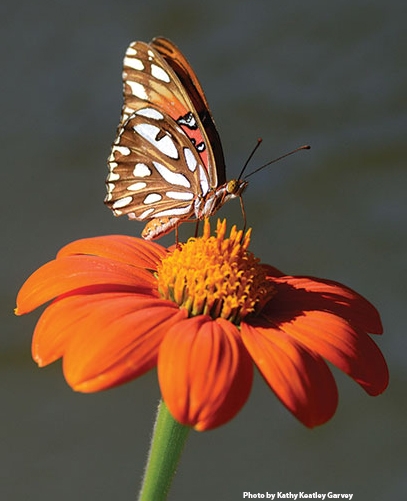
Chrobak, a freelance writer and editor based in Colorado, begins:
"For more than 40 years, Arthur Shapiro, a distinguished professor of evolution and ecology at UC Davis, has counted butterflies at the same 10 spots in California. His sites span an elevation range from sea level to tree line, starting at the Suisun Marsh and crossing the Central Valley, the Sierra foothills and ending on the Eastern Sierra slope."
"At each stop, he always walks the same route, jotting down every butterfly he finds. Those hikes have revealed a disturbing trend. At most of Shapiro's sites, the number of butterflies is going down. In a 2020 paper, he and other researchers reported that butterfly abundance has been dropping by 1.6 percent annually over the past four decades across 70 locations in the western U.S."
"Increasingly, researchers are finding that humanity's footprint can crush even the small organisms we tend to take for granted, including insects. And that can be a problem for us, because humans rely on these inconspicuous fauna in many ways, including to pollinate a large portion of our fruits and veggies and nuts. UC Davis scientists are monitoring these pollinators to find out what's behind their worrisome decline."
Chrobak goes on to write about such pollinators as honey bees, native bees, and hummingbirds. In addition to Shapiro, she quotes:
- Hymenoptera expert Lynn Kimsey, director of the Bohart Museum of Entomology and a UC Davis distinguished professor of entomology. She hosts the annual Robbin Thorp Memorial Bumble Bee Contest contest to determine who can find the first bumble bee of the year in Yolo, Solano and Sacramento counties.
- Honey bee expert Elina Lastro Niño, Extension apiculturist with the UC Davis Department of Entomology and Nematology; director of the California Master Beekeepers' Program; and faculty director of the UC Davis Bee Haven. Pests, pathogens, pesticides and poor nutrition all threaten honey bee colonies, she points out.
- Avian veterinarian and hummingbird expert Lisa Tell, a UC Davis professor of veterinary medicine and author of a newly published children's poetry book, "If Hummingbirds Could Hum," that relates how to attract hummers. Hummingbird feeders, she says, should be cleaned every day in hot summer weather to prevent sugar water from fermenting or growing harmful microbes.
Bottom line: our pollinators are in trouble. Some are going extinct; many are in decline; and some are disappearing at an alarming level. We all need to do our part to help save them.
Some resources to help:
- What to plant to attract bees and other pollinators: See the UC Davis Bee Haven website, directed by Niño and managed by Chris Casey. The Haven, located on Bee Biology Road, west of the central campus, is open year around, from dawn to dusk.
- What to plant to attract butterflies: See Art Shapiro's website, Art's Butterfly World
- Sign up for bee classes with the California Master Beekeepers' Program, launched and directed by Elina Lastro Niño
- See pollinators and other insects at the UC Davis Bohart Museum of Entomology, home of a global collection of 8 million insect specimens. (The Bohart, located in Room 1124 of the Academic Surge Building, is temporarily closed due to COVID-19 pandemic precautions)
In addition, the UC Davis Arboretum and Public Garden is a wealth of information, and periodically hosts plant sales at its nursery on Garrod Drive. Many UC Davis entomology faculty work with pollinators, including pollination ecologist Neal Williams; honey bee scientist Brian Johnson, focusing on animal behavior, evolution, theoretical biology, and genomics; community ecologists Louie Yang and Rachel Vannette; and urban landscape entomologist Emily Meineke. Diane Ullman, whose work encompasses insect/virus/plant interactions and management strategies for insect-transmitted plant pathogens, directs ceramic-mosaic art programs showcasing pollinators.
Photographs for the UC Davis Magazine article are by Kathy Keatley Garvey, communications specialist with the UC Davis Department of Entomology and Nematology, and an avid pollinator photographer, especially of bees and butterflies.
UC Davis Magazine has been covering the campus since 1983 and is published in March and September. The yearly subscription is $12.
Attached Images:
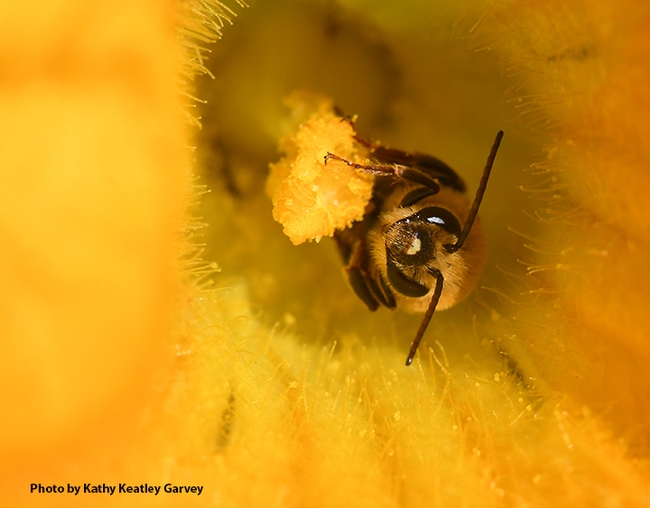
A squash bee, Peponapis pruinosa, pollinating a squash. (Photo by Kathy Keatley Garvey)
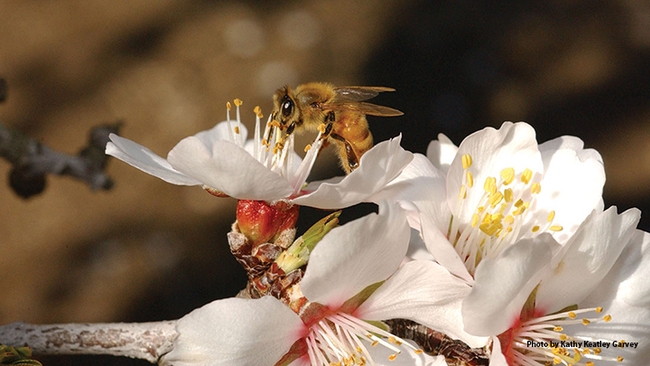
A honey bee, Apis mellifera, foraging on an almond blossom. (Photo by Kathy Keatley Garvey)
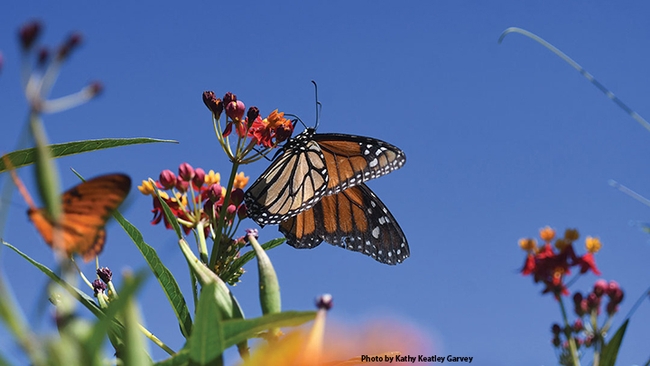
A monarch butterfly, Danaus plexippus, nectaring on milkweed, its host plant. (Photo by Kathy Keatley Garvey)
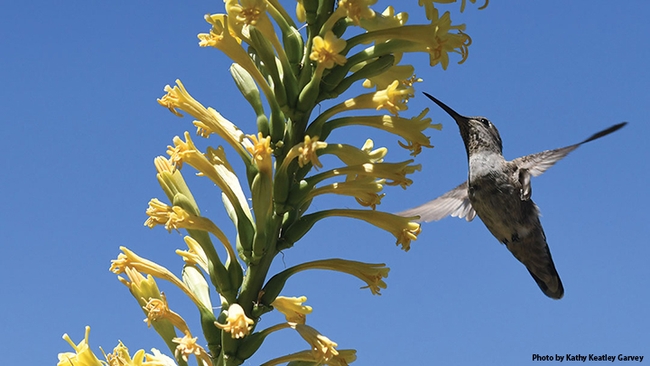
A hummingbird seeking nectar. (Photo by Kathy Keatley Garvey)